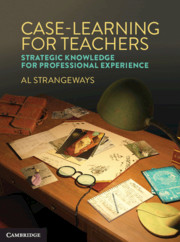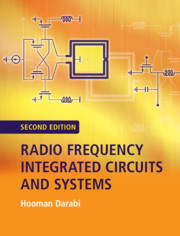Refine search
Actions for selected content:
36762 results in Cambridge Textbooks
13 - Improving Creativity in Organizational Settings
-
-
- Book:
- Creativity
- Published online:
- 21 April 2021
- Print publication:
- 08 April 2021, pp 242-271
-
- Chapter
- Export citation
6 - Law, technology and the criminal justice system
-
- Book:
- Technology Law
- Published online:
- 21 April 2021
- Print publication:
- 08 April 2021, pp 111-139
-
- Chapter
- Export citation
13 - STATE-SPACE DESCRIPTION AND ANALYSIS OF THE CLOSED-LOOP SYSTEM
-
- Book:
- Understanding Process Dynamics and Control
- Published online:
- 29 October 2021
- Print publication:
- 08 April 2021, pp 409-436
-
- Chapter
- Export citation
10 - Motivation and Creativity
-
-
- Book:
- Creativity
- Published online:
- 21 April 2021
- Print publication:
- 08 April 2021, pp 176-195
-
- Chapter
- Export citation
4 - Law, technology and healthcare
-
- Book:
- Technology Law
- Published online:
- 21 April 2021
- Print publication:
- 08 April 2021, pp 64-92
-
- Chapter
- Export citation
Contents
-
- Book:
- Understanding Process Dynamics and Control
- Published online:
- 29 October 2021
- Print publication:
- 08 April 2021, pp ix-xvi
-
- Chapter
- Export citation

Case Learning for Teachers
- Strategic Knowledge for Professional Experience
-
- Published online:
- 01 April 2021
- Print publication:
- 18 June 2020
-
- Textbook
- Export citation

Radio Frequency Integrated Circuits and Systems
-
- Published online:
- 01 April 2021
- Print publication:
- 12 March 2020
-
- Textbook
- Export citation
Contents
-
- Book:
- Solid State Materials Chemistry
- Published online:
- 14 September 2021
- Print publication:
- 01 April 2021, pp v-xvi
-
- Chapter
- Export citation
7 - Optical Materials
-
- Book:
- Solid State Materials Chemistry
- Published online:
- 14 September 2021
- Print publication:
- 01 April 2021, pp 243-300
-
- Chapter
- Export citation
5 - The European Dimensions
- from Part I - Constitution, State and Beyond
-
- Book:
- Turpin and Tomkins' British Government and the Constitution
- Published online:
- 22 April 2021
- Print publication:
- 01 April 2021, pp 342-436
-
- Chapter
- Export citation
Part IV - Liberty
-
- Book:
- Turpin and Tomkins' British Government and the Constitution
- Published online:
- 22 April 2021
- Print publication:
- 01 April 2021, pp 895-896
-
- Chapter
- Export citation
15 - Amorphous and Disordered Materials
-
- Book:
- Solid State Materials Chemistry
- Published online:
- 14 September 2021
- Print publication:
- 01 April 2021, pp 619-654
-
- Chapter
- Export citation
5 - Chemical Bonding
-
- Book:
- Solid State Materials Chemistry
- Published online:
- 14 September 2021
- Print publication:
- 01 April 2021, pp 154-199
-
- Chapter
- Export citation
9 - Magnetic Materials
-
- Book:
- Solid State Materials Chemistry
- Published online:
- 14 September 2021
- Print publication:
- 01 April 2021, pp 349-395
-
- Chapter
- Export citation
14 - Zeolites and Other Porous Materials
-
- Book:
- Solid State Materials Chemistry
- Published online:
- 14 September 2021
- Print publication:
- 01 April 2021, pp 579-618
-
- Chapter
- Export citation
Acknowledgments
-
- Book:
- Turpin and Tomkins' British Government and the Constitution
- Published online:
- 22 April 2021
- Print publication:
- 01 April 2021, pp xix-xxii
-
- Chapter
- Export citation
10 - Conducting Materials
-
- Book:
- Solid State Materials Chemistry
- Published online:
- 14 September 2021
- Print publication:
- 01 April 2021, pp 396-456
-
- Chapter
- Export citation
Table of Cases
-
- Book:
- Turpin and Tomkins' British Government and the Constitution
- Published online:
- 22 April 2021
- Print publication:
- 01 April 2021, pp xxiii-xlvi
-
- Chapter
- Export citation
2 - Defects and More Complex Structures
-
- Book:
- Solid State Materials Chemistry
- Published online:
- 14 September 2021
- Print publication:
- 01 April 2021, pp 54-86
-
- Chapter
- Export citation
